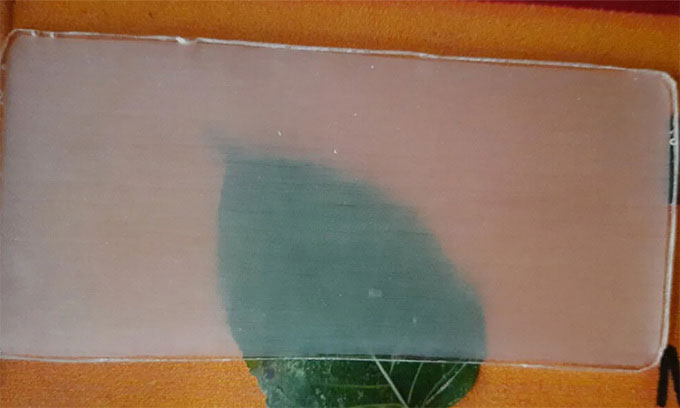A New Study Reveals an Eco-Friendly Method for Producing Transparent Wood with Low Energy Consumption.
A research team at the Indian Institute of Technology (IIT) has discovered that transparent wood has minimal environmental impact and can help reduce energy costs, according to a report by Interesting Engineering on October 20. The study was recently published in the journal Science of The Total Environment.

Transparent wood can replace plastic in various fields. (Photo: SciDev.Net)
According to the United Nations Environment Programme (UNEP), 400 million tons of plastic are produced annually, most of which is single-use plastic. Countries are making significant strides in reducing this type of waste, such as plastic bags and straws. However, some products still require the characteristics of plastic.
Transparent wood serves as an alternative for such products and is highly favored as it avoids the harmful effects of petroleum-based plastic products. German scientist Siegfried Fink first produced transparent wood in 1992, and over the past three decades, researchers have significantly improved this material.
In its natural state, wood is opaque. However, scientists have found that removing lignin, a natural biopolymer that supports the structure of plant tissues, can make wood transparent. To achieve this, wood is soaked in a warm solution containing various chemicals such as sodium hydroxide, sodium sulfite, and sodium hypochlorite, followed by boiling in a hydrogen peroxide solution.
This process completely removes lignin and turns the wood white. However, the spaces that once contained lignin need to be filled to maintain structural integrity. This process is known as impregnation and is done using a resin such as epoxy or polymethyl methacrylate (PMMA) at a temperature of 85 degrees Celsius.
The final product can achieve high transparency and has shatter-resistant properties. More importantly, it is more biodegradable than glass or plastic. Although not yet commercialized, transparent wood has been used in various fields, from construction to energy storage, electronics manufacturing, and packaging.
The researchers at IIT conducted a life cycle assessment (LCA) of transparent wood to determine the environmental impact of its production process and end-of-life (EOL) cycle. The study shows that using hydrogen peroxide to remove lignin, followed by epoxy for impregnation, is the most environmentally friendly method.
This method reduces the risk of global warming by 24% and decreases soil acidification by 15% compared to the method using sodium chlorite for lignin removal and PMMA for impregnation. When scaled up for industrial production, the new method will reduce electricity consumption by 98.8%. The EOL analysis also indicates that transparent wood reduces ecological impact by about 107 times compared to polyethylene, paving the way for commercial applications to replace petroleum-based materials.


















































